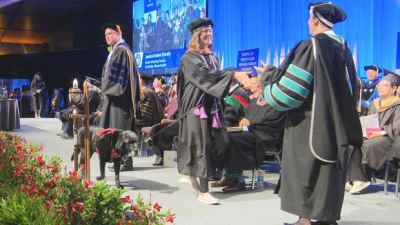
Hannah Auchentaller: Trailblazing Artist and Designer 2024-05-17 04:43:52
Hannah Auchentaller: Pioneering Artist and Designer
Hannah Auchentaller
Hannah Auchentaller (1859–1940) was a visionary Austrian artist and designer whose innovative work left an indelible mark on the early 20th-century art scene. Renowned for her distinctive style and contributions to the Wiener Werkstätte movement, Auchentaller's artistic journey reflects a convergence of artistic exploration, cultural exchange, and personal evolution.
Born Hannah Nördlinger in Vienna in 1859, Auchentaller demonstrated a prodigious talent for the arts from an early age. She received formal training at the prestigious Vienna School of Arts and Crafts, where she honed her skills in painting, drawing, and decorative arts. It was during this time that she met her future husband, the acclaimed architect Josef Maria Auchentaller, whose influence would profoundly shape her artistic trajectory.
Auchentaller's oeuvre is characterized by its fusion of various artistic influences, ranging from the intricacies of Art Nouveau to the geometric abstractions of the Secessionist movement. Her early works often featured delicate floral motifs and ornamental designs, showcasing a keen attention to detail and a mastery of decorative elements.
In 1897, Auchentaller's artistic horizons expanded significantly when she and her husband relocated to Munich, a vibrant hub of artistic experimentation and cultural exchange. It was here that Auchentaller's creative vision flourished, as she immersed herself in the dynamic milieu of the German avant-garde. Inspired by the principles of the Jugendstil movement, Auchentaller began to explore new forms of artistic expression, incorporating elements of symbolism and abstraction into her work.
Auchentaller's most celebrated contribution to the world of art and design came through her collaboration with the Wiener Werkstätte, a groundbreaking collective dedicated to the synthesis of art and craftsmanship. As one of the few female artists associated with the Wiener Werkstätte, Auchentaller played a pivotal role in redefining traditional notions of gender and creativity. Her designs, which encompassed textiles, ceramics, and graphic arts, epitomized the ethos of the Wiener Werkstätte, blending aesthetic innovation with functional utility.
Despite her significant contributions to the arts, Auchentaller's legacy remained overshadowed for much of the 20th century, as male counterparts garnered greater recognition and acclaim. However, in recent years, there has been a renewed interest in Auchentaller's work, with scholars and art enthusiasts alike rediscovering the depth and significance of her artistic contributions.
Today, Auchentaller's legacy endures as a testament to the power of artistic vision and creative exploration. Her pioneering spirit continues to inspire generations of artists, designers, and cultural innovators, reaffirming her rightful place among the pantheon of artistic luminaries of the modern era.
Hannah Auchentaller: Pioneering Artist and Designer
Hannah Auchentaller (1859–1940) was a visionary Austrian artist and designer whose innovative work left an indelible mark on the early 20th-century art scene. Renowned for her distinctive style and contributions to the Wiener Werkstätte movement, Auchentaller's artistic journey reflects a convergence of artistic exploration, cultural exchange, and personal evolution.
Born Hannah Nördlinger in Vienna in 1859, Auchentaller demonstrated a prodigious talent for the arts from an early age. She received formal training at the prestigious Vienna School of Arts and Crafts, where she honed her skills in painting, drawing, and decorative arts. It was during this time that she met her future husband, the acclaimed architect Josef Maria Auchentaller, whose influence would profoundly shape her artistic trajectory.
Auchentaller's oeuvre is characterized by its fusion of various artistic influences, ranging from the intricacies of Art Nouveau to the geometric abstractions of the Secessionist movement. Her early works often featured delicate floral motifs and ornamental designs, showcasing a keen attention to detail and a mastery of decorative elements.
In 1897, Auchentaller's artistic horizons expanded significantly when she and her husband relocated to Munich, a vibrant hub of artistic experimentation and cultural exchange. It was here that Auchentaller's creative vision flourished, as she immersed herself in the dynamic milieu of the German avant-garde. Inspired by the principles of the Jugendstil movement, Auchentaller began to explore new forms of artistic expression, incorporating elements of symbolism and abstraction into her work.
Auchentaller's most celebrated contribution to the world of art and design came through her collaboration with the Wiener Werkstätte, a groundbreaking collective dedicated to the synthesis of art and craftsmanship. As one of the few female artists associated with the Wiener Werkstätte, Auchentaller played a pivotal role in redefining traditional notions of gender and creativity. Her designs, which encompassed textiles, ceramics, and graphic arts, epitomized the ethos of the Wiener Werkstätte, blending aesthetic innovation with functional utility.
Despite her significant contributions to the arts, Auchentaller's legacy remained overshadowed for much of the 20th century, as male counterparts garnered greater recognition and acclaim. However, in recent years, there has been a renewed interest in Auchentaller's work, with scholars and art enthusiasts alike rediscovering the depth and significance of her artistic contributions.
Today, Auchentaller's legacy endures as a testament to the power of artistic vision and creative exploration. Her pioneering spirit continues to inspire generations of artists, designers, and cultural innovators, reaffirming her rightful place among the pantheon of artistic luminaries of the modern era.
As of my last update in January 2022, Hannah Auchentaller may be mentioned in various books, articles, and scholarly papers discussing the Wiener Werkstätte movement, the Vienna Secession, Art Nouveau, and related topics. Additionally, she might be referenced in exhibitions, museum catalogs, and online resources dedicated to the history of art and design. However, specific mentions of Auchentaller in films, television series, or websites would depend on the scope of coverage in those respective mediums and would need to be verified through targeted research.


















